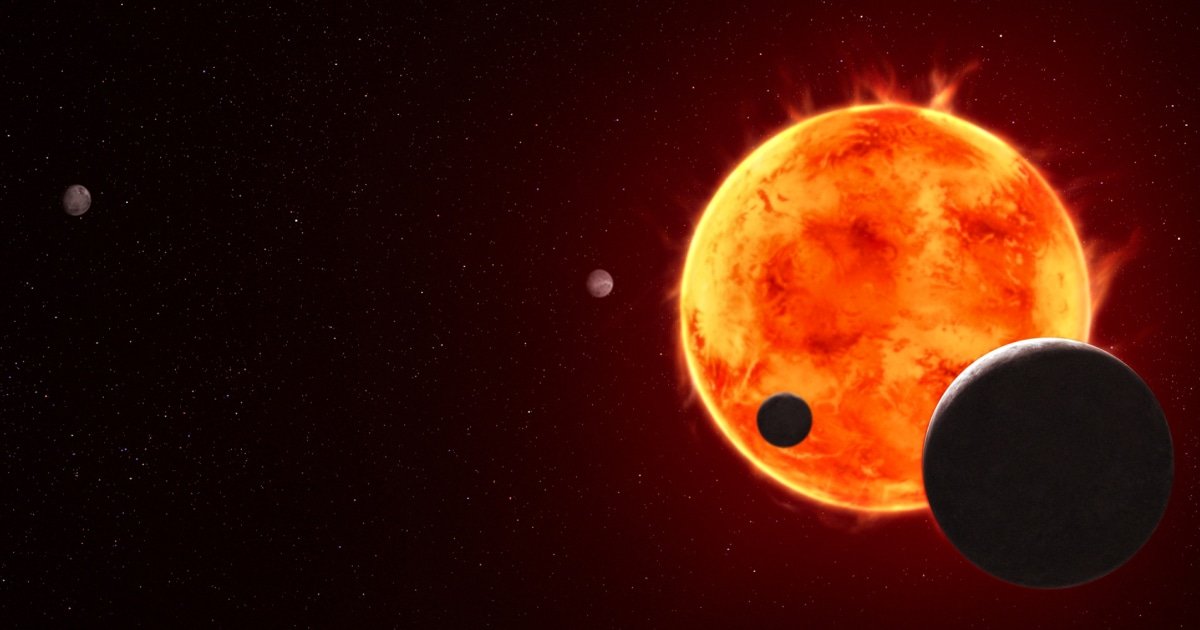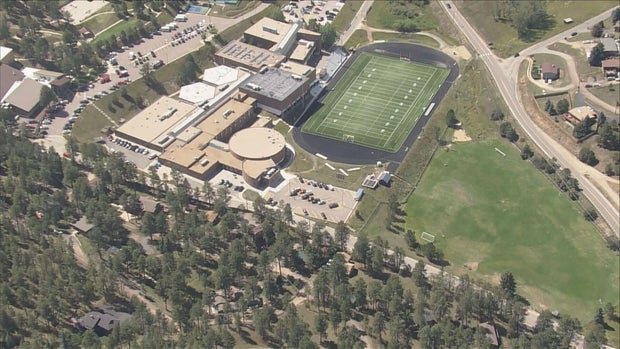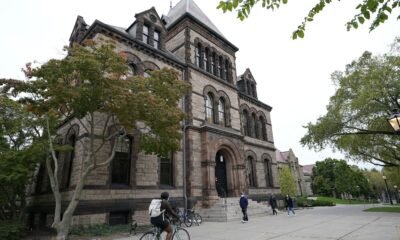Top Stories
Colombia presidential hopeful Miguel Uribe Turbay dies weeks after campaign rally shooting

Colombian conservative senator and presidential hopeful Miguel Uribe Turbay died Monday, more than two months after being shot during a campaign rally in western Bogota.
His wife, María Claudia Tarazona, confirmed the 39-year-old’s death early Monday.
Uribe Turbay was critically wounded on June 7 during a campaign rally in the country’s capital, suffering gunshot wounds to the head and leg. He underwent emergency surgery and remained hospitalized in intensive care until his death.
“You’ll always be the love of my life,” his wife, Maria Claudia Tarazona, said on Instagram early on Monday. “Thank you for a life filled with love, thank you for being a father to the girls, the best dad to Alejandro.”
Gabriel Aponte/Getty Images for Concordia Summit
A teenage suspect was arrested at the scene, and authorities have since detained several others. Last month, police arrested the alleged mastermind of the attack — Elder José Arteaga Hernández, who uses the aliases “Chipi” or “Costeño.”
The incident has raised renewed concerns about political violence in the country.
The motive for the shooting is still being investigated. In October, Uribe announced his intention to run in Colombia’s 2026 presidential election. From his Senate seat, he had become one of President Gustavo Petro’s most vocal critics.
The attack has been widely condemned in a country with a dark past in which drug cartels and insurgent groups murdered and kidnapped politicians. Uribe is the son of a journalist who was abducted and killed during one of the country’s most violent periods in 1991.
Shortly after the shooting, Secretary of State Marco Rubio said the U.S. “condemns in the strongest possible terms the attempted assassination” and called the attack “a direct threat to democracy.” He blamed “violent leftist rhetoric coming from the highest levels of the Colombian government” for the shooting.
Top Stories
Charlie Kirk: Trump ally shot dead at campus event in Utah

Pelosi and Giffords react to Kirk’s shootingpublished at 21:03 British Summer Time
US politicians are sharing their shock after the shooting of Charlie Kirk.
Congresswoman Nancy Pelosi, a Democrat, says she is praying for Kirk’s recovery.
“Political violence has absolutely no place in our nation.
All Americans should pray for Charlie Kirk’s recovery and hold the entire UVU community in our hearts as they endure the trauma of this gun violence,” she wrote on X.
Former US representative Gabby Giffords also posted, condemning violent responses to political differences. In 2011, Giffords was shot in the head during a meeting with constituents in a grocery store parking lot. She survived, but resigned from office due to a brain injury.
“Democratic societies will always have political disagreements, but we must never allow America to become a country that confronts those disagreements with violence,” she said.
Top Stories
Extraterrestrial life needs the right atmosphere. This planet 40 light-years away might fit the bill, scientists say

A rocky, Earth-size planet located in our Milky Way galaxy may have an atmosphere around it, according to new research, raising the possibility that it could also have liquid water on its surface and could therefore support life.
In two separate papers published Monday in the Astrophysical Journal Letters, astronomers zeroed in on the TRAPPIST-1 system, which consists of seven rocky planets that orbit a single star. Both studies outlined initial results from observations by NASA’s James Webb Space Telescope, suggesting that one planet in particular, known as TRAPPIST-1e, may have a nitrogen-rich atmosphere like Earth’s, though follow-up studies are needed to confirm the discovery.
The results are an important step in the ongoing search for extraterrestrial life in the solar system and beyond.
This week, NASA announced that a rock sample collected on Mars may contain evidence of ancient microbial life. Present-day Mars has a thin atmosphere mostly made up of carbon dioxide, nitrogen, and argon gases, but the Red Planet is thought to have had a thicker atmosphere billions of years ago, when liquid water flowed on its surface.
Scientists have long held that water is an essential ingredient for life.
To keep water in liquid form, rather than it evaporating instantly into space, a planet or moon needs to have an atmosphere. That makes the search for exoplanet atmospheres one of the most tantalizing in the field of astronomy.
“Ultimately, we want to get to the point where we find a planet, and huzzah, we see a molecule that can only be produced by life,” said Ryan MacDonald, an exoplanet astronomer at the University of St Andrews in Scotland and a co-author of both studies. “But you need to have an atmosphere, so what we’ve been working on first is to find planets that have atmospheres.”
The TRAPPIST-1 system, which is 40 light-years away from Earth, has been widely studied since it was discovered in 2016 because several of the planets could have conditions suitable to support extraterrestrial life.
Each light year is approximately 6 trillion miles.
TRAPPIST-1e, in particular, is thought to orbit its star in the theoretical “habitable zone,” a distance that is not too close for it to be hellishly hot, and not too far to be icy cold, but rather just right for liquid water to exist on the surface.
For the new studies, astronomers used NASA’s James Webb Space Telescope to observe four “transits” of TRAPPIST-1e, or times when the planet passed in front of its star. The telescope did not directly see an atmosphere around TRAPPIST-1e, but rather it measured how the exoplanet absorbed light to figure out what, if anything, surrounds the planet.
Much like a prism, light can be separated into different bands of color on a rainbow spectrum, and how certain colors are blocked or filtered can be telltale signatures of specific atoms or molecules of gas.
If certain colors are absorbed, for instance, it can suggest high concentrations of carbon dioxide. Other changes in color can hint at different chemical properties, including the presence of hydrogen, oxygen, methane or nitrogen.
“If we see no variation in color, then the planet is probably just a bare rock,” MacDonald said. “A bare rock doesn’t care if you shine red light or blue light on it. It will just block them all equally.”
In four transits, the researchers did not find evidence of a hydrogen-rich atmosphere around TRAPPIST-1e. Nor did they see signs that its potential atmosphere is dominated by carbon dioxide. The Webb telescope’s observations, however, do hint that its atmosphere could be rich in nitrogen.
“This is an exciting step and it really helps us narrow down the possibilities of an atmosphere that is perhaps more Earth-like,” said Caroline Piaulet-Ghorayeb, a postdoctoral fellow at the University of Chicago who was not involved with the new studies.
Earth’s own atmosphere contains high concentrations of nitrogen gas. Titan, one of the moons around Saturn, also has an atmosphere that is mostly nitrogen. NASA has said that Titan likely harbors a vast underground ocean, which could make it habitable, but the moon’s methane-filled environment would mean that any life that does exist there would be very different from life on Earth.
Piaulet-Ghorayeb separately was the lead author of a study published last month in The Astrophysical Journal that focused on a different planet in the TRAPPIST-1 system: TRAPPIST-1d, the third planet from the star that also orbits within the habitable zone. That study found no evidence of molecules that are common in Earth’s atmosphere, such as water, carbon dioxide or methane.
Studying these celestial bodies come with significant challenges.
The TRAPPIST-1 star is small but extremely active, which creates a lot of background noise for researchers to sift through. MacDonald and his colleagues, for instance, spent more than a year analyzing data from the Webb telescope and trying to differentiate chemical signatures coming from TRAPPIST-1e and its star.
To confirm the presence of an atmosphere, MacDonald and his colleagues are planning to study TRAPPIST-1e during 15 more transits in the coming years.
Studies are also forthcoming for three other planets that are farther out in the system, TRAPPIST-1f, TRAPPIST-1g and TRAPPIST-1h, he said.
The research should help scientists inch closer to answering some of the most enduring questions about exoplanets and the search for life.
“We haven’t yet convincingly found an atmosphere on any rocky planet outside of the solar system, which makes studying and searching for atmospheres on temperate planets extremely exciting,” Piaulet-Ghorayeb said. “But there’s a lot of work to do.”
Top Stories
Shooting at Evergreen High School in Colorado leaves 3 students hurt; first responders “not certain how many shooters”

Three students were critically wounded on Wednesday in a shooting at Evergreen High School in the Colorado foothills. So far, it’s not clear who the shooter or shooters are, according to the Jefferson County Sheriff’s Office.
CBS
The shooting took place just after noon at the school located at 29300 Buffalo Park Road in Evergreen, which is 28 miles southwest of Denver.
JeffCo emergency communications said there are reports of “an active assailant in the area of Evergreen High School.” St. Anthony’s Hospital in Lakewood said there are three Evergreen High School students at the hospital who suffered gunshot wounds; all are in critical condition.
CBS
It’s still an active scene, and authorities asked those with students at the school not to go directly to the school at this time. Nearby, Wilmot Elementary School was also placed on lockdown just after 1:50 p.m.
Jacki Kelley, the Public Information Officer for the Jefferson County Sheriff’s Office, said during a press conference that “We’re not certain how many shooters we have or where that shooter might be. I’m hoping to get more information to you quickly.” The sheriff’s office began receiving numerous calls coming from the school immediately following the shooting, she shared.
Kelley expressed her gratitude for departments from across the Denver metro area that self-deployed to help with the situation. She said multiple teams of law enforcement are in the process of clearing the school room by room. Kelley confirmed that the shooting happened on school grounds and said that, at this time, they believe it took place inside the school.
The school district provided an update around 1:30 p.m. that a reunification center will be located at Bergen Meadow Elementary School, located at 1928 S. Hiwan Dr.
Shortly following the shooting, an Evergreen High School teacher told CBS Colorado that they were on lockdown with some students inside a game room in the school. As of 1:45 p.m., students could be seen exiting the school single file.
Gov. Jared Polis released a statement Wednesday, saying, “I am closely monitoring the situation at Evergreen High School, and am getting live updates. State Troopers are supporting local law enforcement in responding to this situation. Students should be able to attend school safely and without fear across our state and nation. We are all praying for the victims and the entire community.”
This is a developing story; more information will be provided as it becomes available.
-

 Business2 weeks ago
Business2 weeks agoThe Guardian view on Trump and the Fed: independence is no substitute for accountability | Editorial
-
Tools & Platforms4 weeks ago
Building Trust in Military AI Starts with Opening the Black Box – War on the Rocks
-

 Ethics & Policy2 months ago
Ethics & Policy2 months agoSDAIA Supports Saudi Arabia’s Leadership in Shaping Global AI Ethics, Policy, and Research – وكالة الأنباء السعودية
-

 Events & Conferences4 months ago
Events & Conferences4 months agoJourney to 1000 models: Scaling Instagram’s recommendation system
-

 Jobs & Careers2 months ago
Jobs & Careers2 months agoMumbai-based Perplexity Alternative Has 60k+ Users Without Funding
-

 Education2 months ago
Education2 months agoVEX Robotics launches AI-powered classroom robotics system
-

 Podcasts & Talks2 months ago
Podcasts & Talks2 months agoHappy 4th of July! 🎆 Made with Veo 3 in Gemini
-

 Education2 months ago
Education2 months agoMacron says UK and France have duty to tackle illegal migration ‘with humanity, solidarity and firmness’ – UK politics live | Politics
-

 Funding & Business2 months ago
Funding & Business2 months agoKayak and Expedia race to build AI travel agents that turn social posts into itineraries
-

 Podcasts & Talks2 months ago
Podcasts & Talks2 months agoOpenAI 🤝 @teamganassi




















